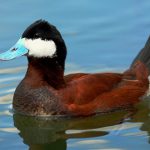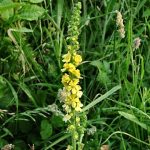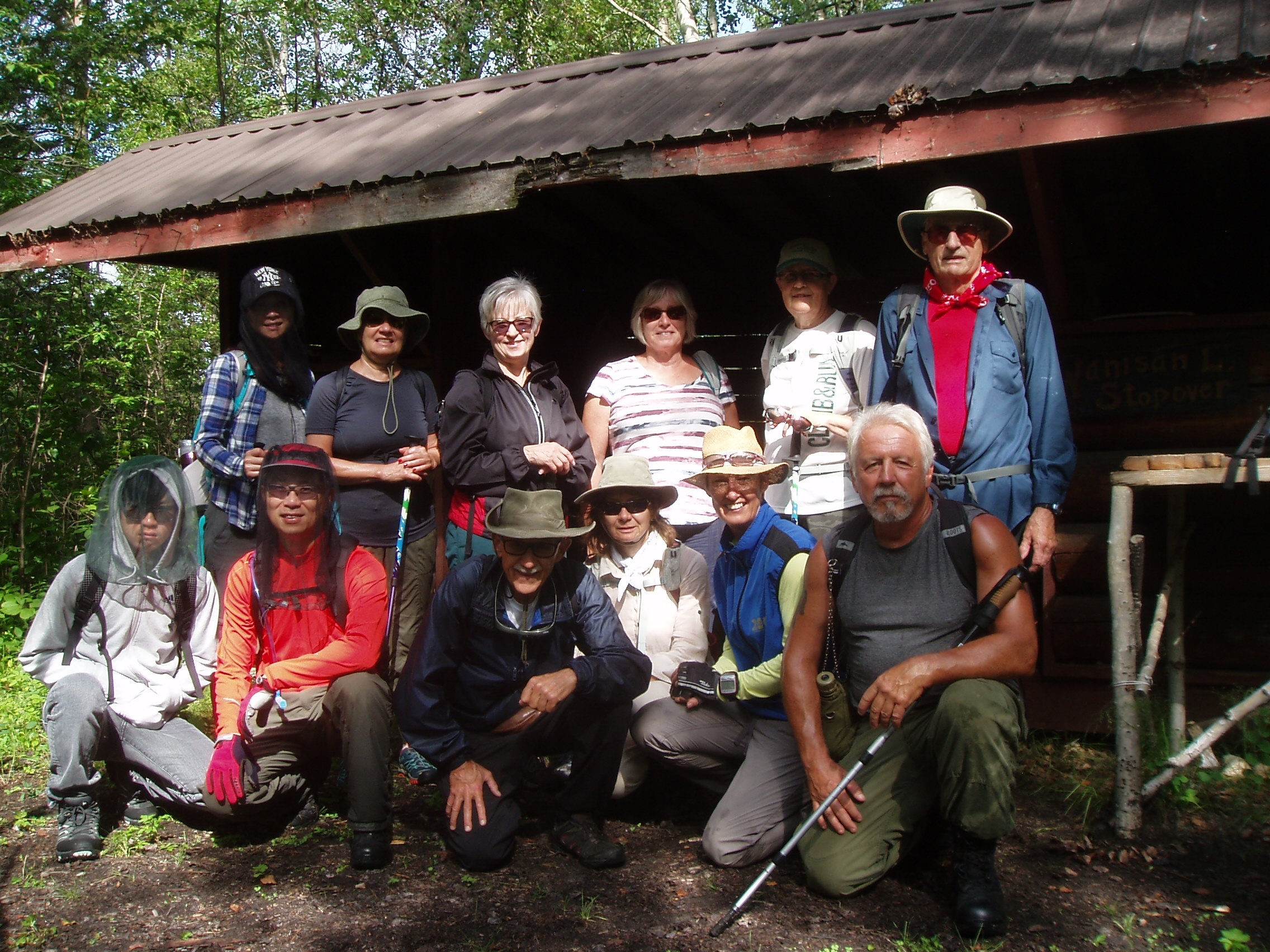The Pipestone Creek trail is a favourite of moderate fitness enthusiasts, but at the height of midsummer it’s an absolute BONANZA for those of us who like flowering plants.
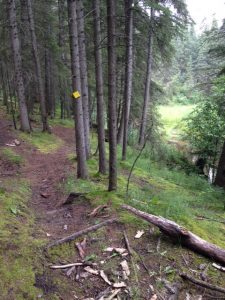 Twenty people from Edmonton, Beaumont, Hay Lakes, Wetaskiwin, and Camrose met on a quiet road at the bridge over Pipestone Creek. Immediately we entered the dark and mossy forest of towering old spruce that edged along the right bank. Soon we came out to open and flowered meadows that overlooked farms to the south.
Twenty people from Edmonton, Beaumont, Hay Lakes, Wetaskiwin, and Camrose met on a quiet road at the bridge over Pipestone Creek. Immediately we entered the dark and mossy forest of towering old spruce that edged along the right bank. Soon we came out to open and flowered meadows that overlooked farms to the south.
We went up and down the slopes, in and out of gulleys, and stepped over many strange fungi, not to mention numerous stiles.
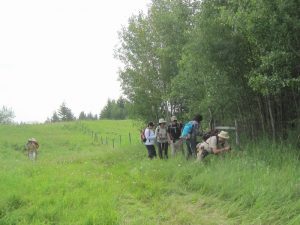
The weather was humid and mostly overcast but the frequent breezes kept back the mosquitoes. We were concerned that the dirt slopes would be sticky after the rain we had, in the city anyway, almost every day this week. We were relieved to find the slopes dry.
Lunch was long and leisurely on the bank of the Pipestone where it meets the Bigstone Creek. The cows on the other side watched us and we watched them. “Better than the Nature channel,” said Kirsten.
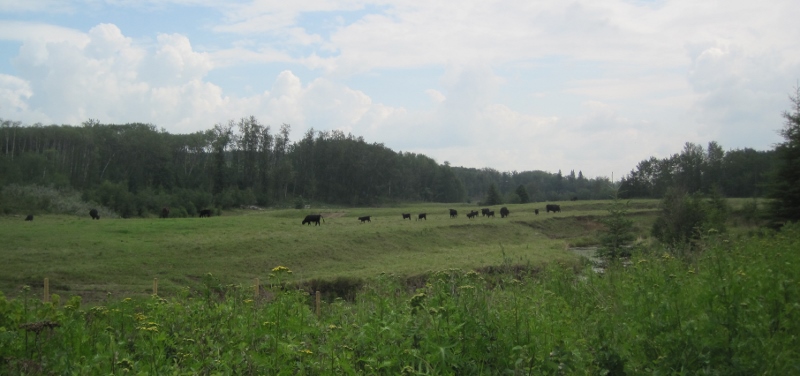
On the way back, a violent splashing got our attention. We stopped to watch a juvenile duck beating the water with its wings, propelling itself along the surface, as it tried and tried to lift itself off into flight.
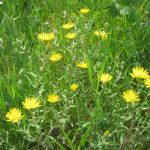
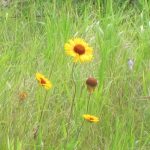
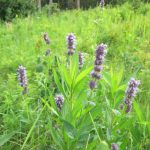
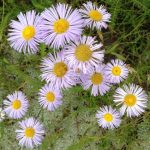
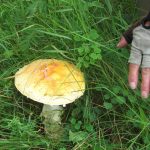
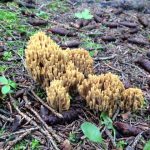
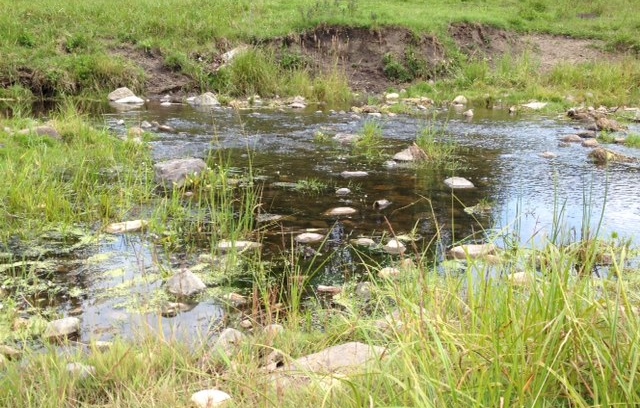
We are deeply grateful to the Trail Maintenance crew for the fine work of mowing back the lush growth, the clearing of fallen trees, and the excellent trail signing that made this such an enjoyable hike today.
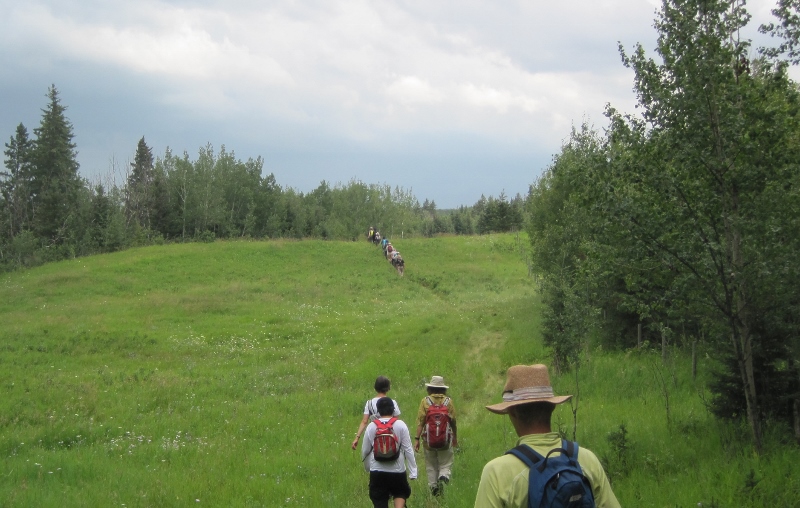
See more photos at the Waskahegan Trail Flickr account.

